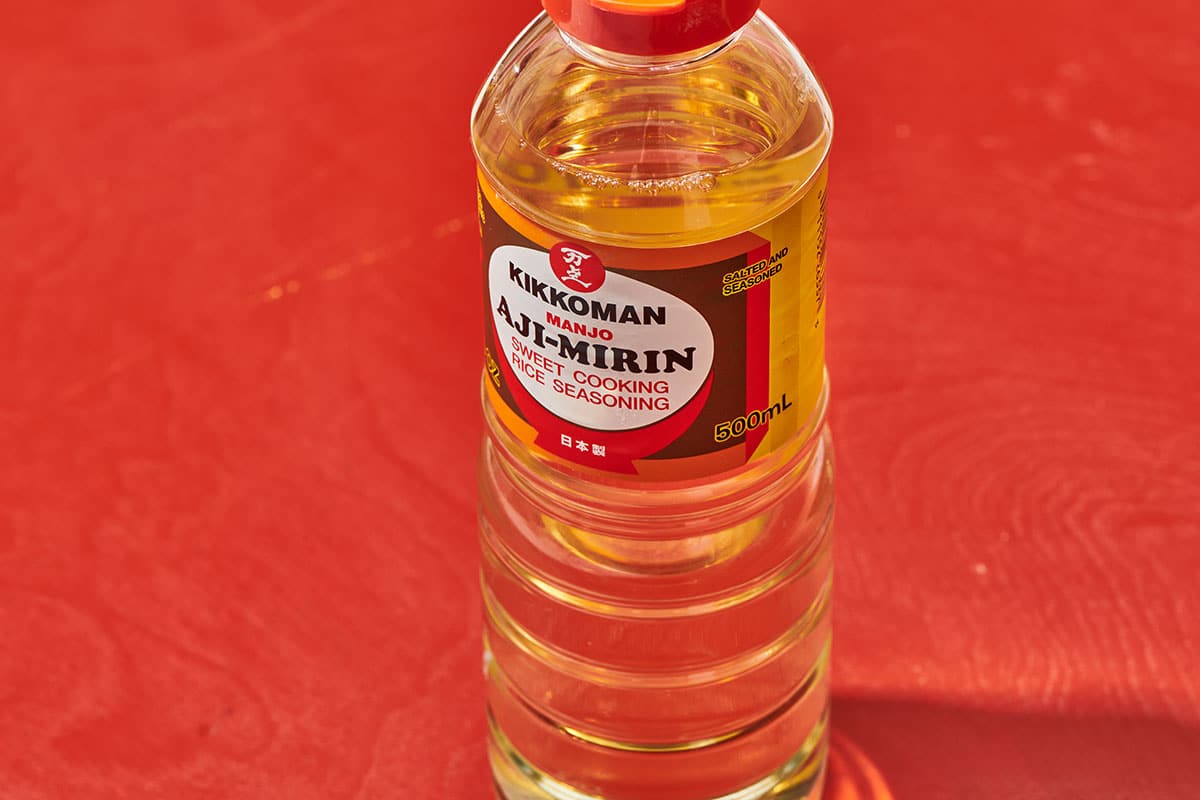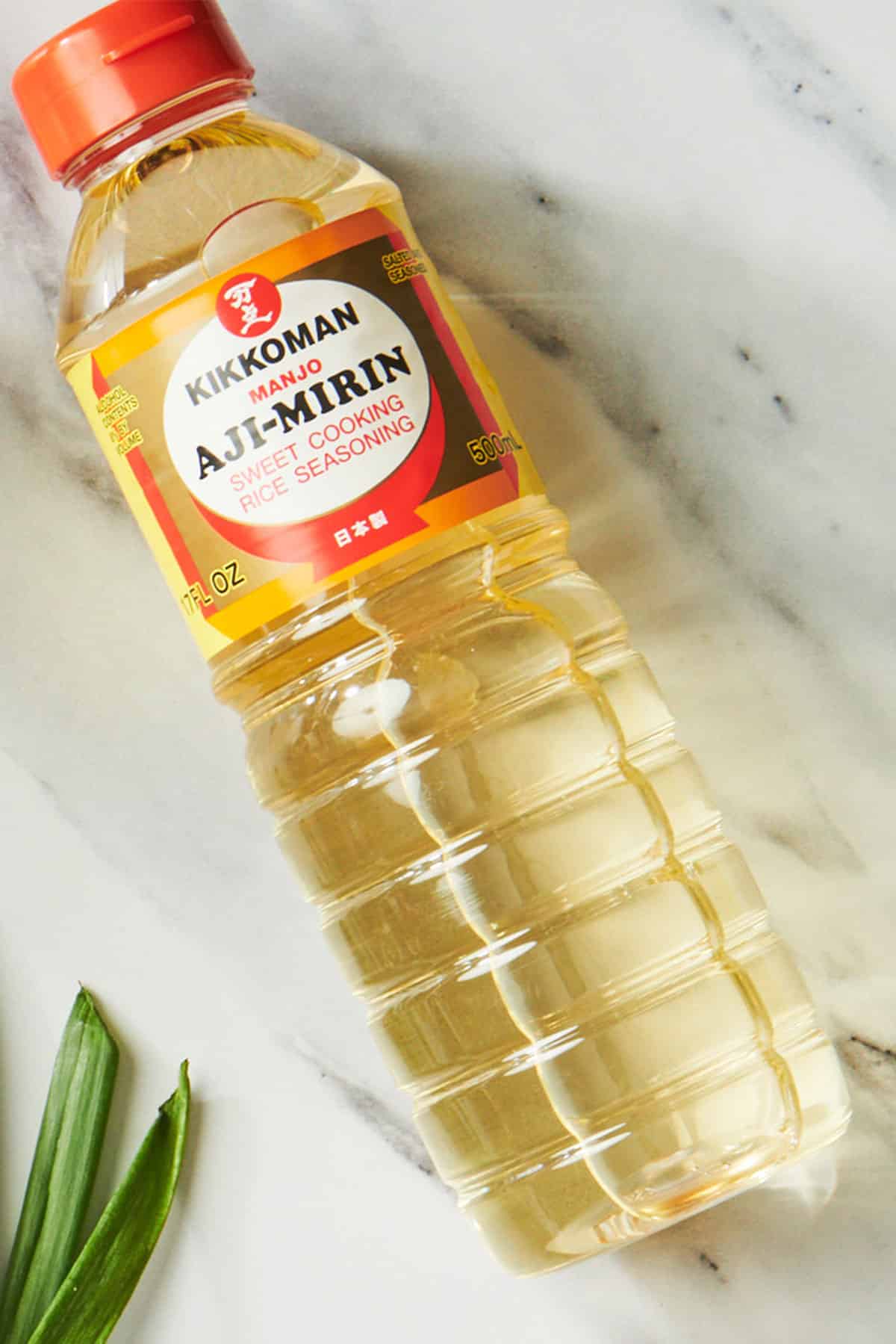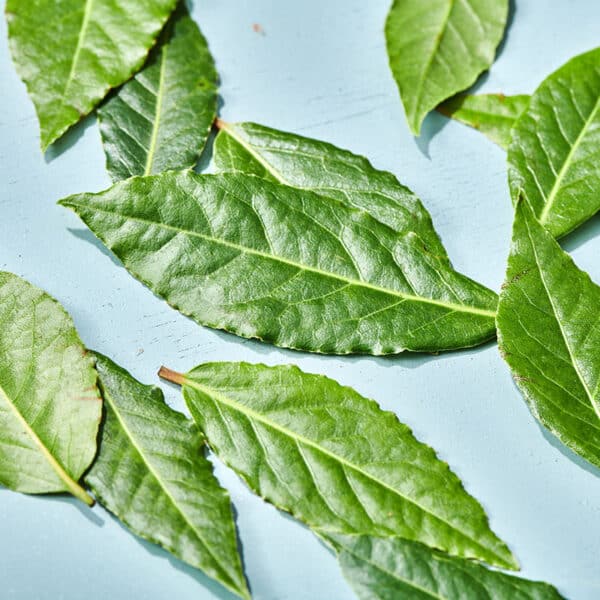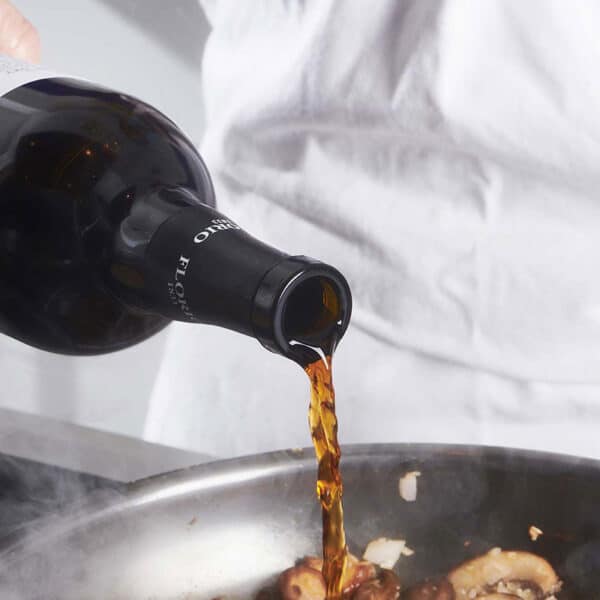How to Cook With Mirin
Updated Jun 13, 2025
This post may contain affiliate links. Please read our disclosure policy.

Mirin is a rice wine that is typically used as an ingredient in Japanese (and other Asian) cuisines. It’s very similar to sake but notably sweeter. It is usually used in cooked dishes, where the alcohol burns off, leaving behind an enhanced flavor to the dish as a whole.
When used in cooking, mirin isn’t really detectible as a singular flavor, but it elevates and enhances the flavors in recipes from Slow Cooker Teriyaki Beef Steaks to Takikomi Gohan with Chicken to Japanese Carrot and Ginger Salad Dressing. It also helps tenderize ingredients, such as meat and poultry.
What's In This Post?

What Is Mirin?
Mirin is a Japanese rice wine akin to sake, but markedly sweeter. Mirin has more naturally occurring sugar content and less alcohol than sake, usually clocking in between 8 and 14% ABV (Alcohol By Volume). It’s also less expensive than most sakes.
By signing up, you agree to our Privacy Policy.
Mirin is made from a mixture of steamed rice, koji (cultured rice), and shochu (distilled rice liquor). This rice wine is a quick, delicious way to add umami to any dish. Avoid mirin with added fructose and corn syrup: look for mirin with only water, rice, koji (a fermenting agent), and salt in the ingredients.
Mirin is a light golden liquid, usually sold in plastic or glass bottles so that you can see its pale amber color. It is not very viscous and flows like water.
The taste of mirin is powerful — rich, tangy, and sweet, with a burst of umami coming from the fermented rice. If you’ve had Japanese food before, you’ve likely tasted mirin, even if you didn’t know it at the time. The delicious taste of mirin is what makes eel sauce so tangy; it enlivens ramen broths, and it makes an appearance in salad dressings and teriyaki sauces.

Different Types of Mirin
There are four different kinds of mirin that you might come across.
The first is hon–mirin, which is the most alcoholic (14% ABV). Plain mirin is made with sake instead of shochu, and has less alcohol. Aji–mirin and kotteri–mirin both mean “tastes something like mirin” and have even less alcohol in them.
- Kotteri-mirin rings in at a shockingly low 0-1% ABV but includes the addition of other ingredients to present the flavor of the more alcoholic rice wines.
- Aji-mirin is the most widely available version of mirin in America and is suitable for any recipe that calls for mirin. It contains an 8-14% ABV.

Where to Find Mirin
Usually, lower-alcohol content mirins such as aji-mirin and kotteri-mirin are available in American supermarkets that stock Japanese goods. If you want more potent mirin, you can also order your mirin online to make sure you’re using a brand that is traditionally made and doesn’t contain additives like fructose and corn syrup.
What Can You Substitute for Mirin?
Because sake and mirin are so similar, you can actually swap sake out for mirin in a pinch. Try mixing sake with sugar in a three-to-one (3:1) ratio to create a mixture that has that same umami taste but with a sweetness that mimics mirin.
If you’re out of sake, you can also try mixing rice vinegar with sugar in a 3:1 ratio. Rice vinegar and mirin are very similar. The key difference is that rice vinegar is sour, so the sugar counteracts that flavor with sweetness.
And if all else fails and you have no sake or rice vinegar in the house, just add a splash of sherry. It’s not the same flavor profile as mirin, but it is still a sweet wine, and sometimes that’s close enough.
How To Use Mirin
When you heat up mirin, all the alcohol burns out quickly. Combining mirin with soy sauce is a classic way to create a great base for a Japanese sauce or glaze. Ponzu, another popular dipping sauce, can be made from citrus juice, mirin, vinegar, seaweed, and bonito fish flakes.
Mirin can also be mixed with other existing sauces to create delicious marinades. The natural sugar it contains is great at balancing and amplifying other flavors. Mirin’s distinctive flavor really shines when added to ramen and udon broths. Mirin a quintessential ingredient in most teriyaki recipes, such as this Teriyaki Salmon. It is also a great ingredient when used with fish or rice in poke bowls.

How to Store Mirin
The shelf life of mirin depends on which type you’ve bought. Higher alcohol content mirin can stay out of the fridge for several months. Lower alcohol content mirins should be kept in the refrigerator since they contain other ingredients that cause them to go bad more quickly.
To preserve the freshness of the mirin for as long as possible, as soon as you have opened the mirin, store it in the fridge.
Fun Facts About Mirin
Did you know that it used to be easier to buy mirin than sugar in Japan? During the Age of Civil War, mirin was developed for the first time as a type of high-end liquor, which used to be sipped straight. Soon after, people started using mirin as a sweetener in dishes instead of more pricy sugar, which was hard to come by. Here are some other fun facts you might not know about mirin:
- Traditional hon-mirin takes 40 to 60 days to ferment.
- Mirin is one of four ingredients in eel sauce, but it surprisingly does not actually contain any parts of eel. Its name is due to the fact that it’s commonly paired with broiled eel.
- Hon-mirin sounds similar to the Japanese words for “eleven” and “thirty,” so the mirin industry has decided to dub November 30th the day of hon-mirin.

Try These Recipes with Mirin
- Chicken Katsu – The delicious katsu sauce is made with ketchup, Worcestershire, soy sauce, mirin, sugar, and mustard.
- Shrimp, Sugar Snap Pea, and Scallion Stir-Fry with Miso Sauce – Mirin is excellent in stir-fries of all stripes.
- Yaki Udon – These slurpable noodles have a very flavorful sauce.
- Goma-ae – A cold spinach dish gets a boost of flavor from mirin.
- Miso Glazed Scallops – These scallops are rich and filled with umami flavor.












